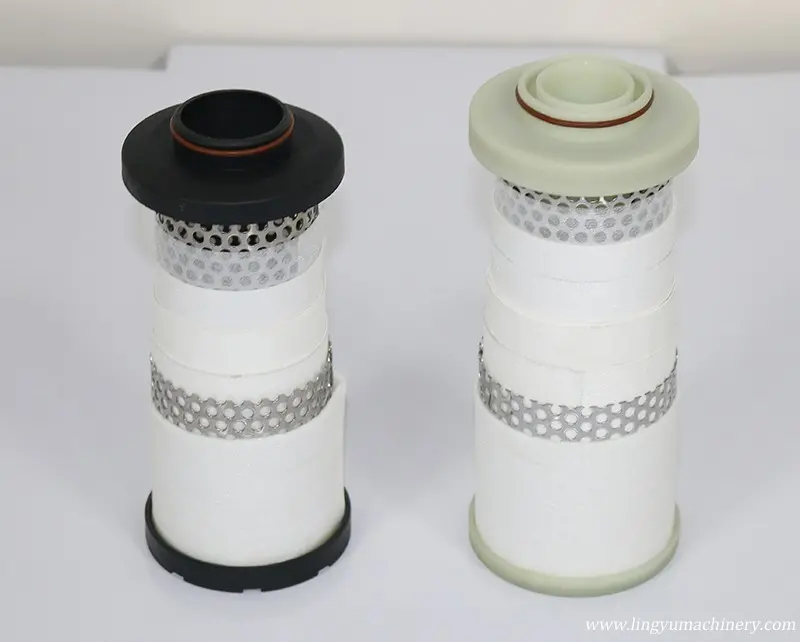Throughout the entire treatment chain, several compressed air filter elements are frequently connected in series. Whether fine filters, ultra-fine filters, or water separators, depending on the desired purity class. We have a comprehensive compressed air filter program. You may find the ideal solution for any requirement concerning the quality of your compressed air.
What is The Filtration Of Compressed Air?
Compressed air filter elements found multiple times in the treatment chain are a fundamental part of compact air treatment. Close air filters gradually remove all types of solid and liquid contaminants. For example, large amounts of condensate and coarse contamination particles. Like rust, abrasion particles, oil droplets, and dust are filtered in the first stages. Followed by fine oil mist and fine dust particles in the following steps.
Compressed air filter elements that incorporate activated carbon eliminate offensive odors and oil vapor. Even viruses and bacteria are removed using certain filters, which results in sterile compressed air.
What Kind Of Compressed Air Filter Elements Does My System Need?
To meet the needs of the modern market, production organizations today require expensive and sophisticated production machinery. If the compressed air is of good quality, equipment and machines powered by compressed air are valuable. The issue of close air contamination must not be disregarded. Even the most basic and straightforward uses of compressed air filter elements require minimal treatment. Such as removing particulates, water, and oil, to ensure optimal performance and reliability.
Different sources of contamination include atmospheric air, water vapor, dust, oil vapors, and bacteria. Air compressors produce oil contaminants in liquid, aerosol, and vapor phases. Corrosion and scales are produced by air catchers (pressure vessels) and distribution systems.

Working Principle of Compressed Air Filter Elements
Unfiltered compressed air must be filtered. Because it often contains dust, oil, corrosion, moisture, and other dangerous materials. The compressed air goes through a compressed air filter element with a tube shape in the first filtering stage, producing a coalescence effect. Larger particles are adsorbed on the filter at this location. This can cause the water to condense into larger droplets that can enter the separating chamber. More than 95% of the water droplets, oil, and oversized particles are removed in the first filtration stage.
In the second filtration step, a fiber filter filters the air. The airflow is less consistent due to the thousands of tiny vortices and other disturbances this process produces. By doing this, more of the filter medium’s surface area is in touch with the air.
Advantages of Compressed Air Filter Elements
Safeguard And Enhance
- Remove any oil and solid debris from the compressed air system at the source.
- Avoid contaminating delicate instruments and pneumatic equipment.
Offer Guaranteed Air Quality
- The high degree of contamination prevention.
- Fully-tested filters that adhere to the most recent ISO8573 and ISO12500 standards.
Utilize Cutting-edge Technology
- High-performance stainless steel filter cores that have been improved guarantee maximum strength and little implosion risk.
- Longer filter life thanks to a dust filter with high particle capacity.
- Compressed air filter elements are created to ensure adequate sealing.
Consult An Authority
It’s crucial to pick the correct compressed air filter elements. Doing so will maximize system protection and save on investment expenditures. Therefore, contact www.lingyumachinery.com. And we will assist you in locating the appropriate solution if you still need clarification about which pollutant you need to filter out or which ISO class you need to meet.
